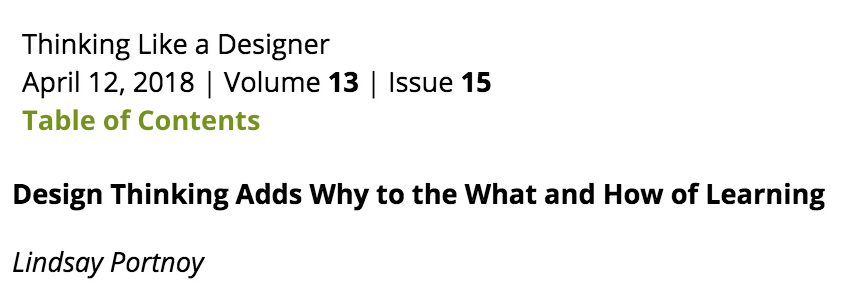By the time our current 4th graders enter the workforce in the year 2026, more than 1.4 million U.S. jobs will be disrupted (changed or eliminated) by technology (World Economic Forum, 2018). At that same time, however, 48 new types of career opportunities will have been created. What is more, children today can expect to have more career changes than any previous generation. To prepare our youngest citizens for an exciting and uncertain future, schools must build skills such as creative thinking, problem solving, perseverance, and effective communication. Teaching our children to think like designers can foster this type of thinking.
From its origins in an engineering classroom several decades ago (Atman & Bursic, 1996), design thinking can be applied across the curriculum and with learners from preK to higher education. The only requirement is an open, curious mind and a desire to innovate. Plattner's (2010) model for design thinking (see Figure 1) provides an ideal canvas for learners to develop a sense of agency in their learning, and autonomy in their ability to innovate and iterate on problems that are most meaningful to their lives. The five, iterative stages of this model—empathize, define, ideate, prototype, and test—integrate "soft skills" like communication, collaboration, problem solving, and perspective-taking with the "hard skills" taught across the curriculum. Moreover, this model for design thinking engages students in the three-dimensional thinking presented in the Next Generation Science Standards (2013) framework, including domain-specific content (disciplinary core ideas), interdisciplinary connections (cross-cutting concepts), and skills and practices of successful problem solvers (science and engineering practices).
Read more here:
Portnoy, L. (2018, April). Design thinking adds "why" to the "what" and "how" of learning. ASCD Express, 3(14). Retrieved from http://www.ascd.org/ascd-express/vol13/1315-portnoy.aspx



